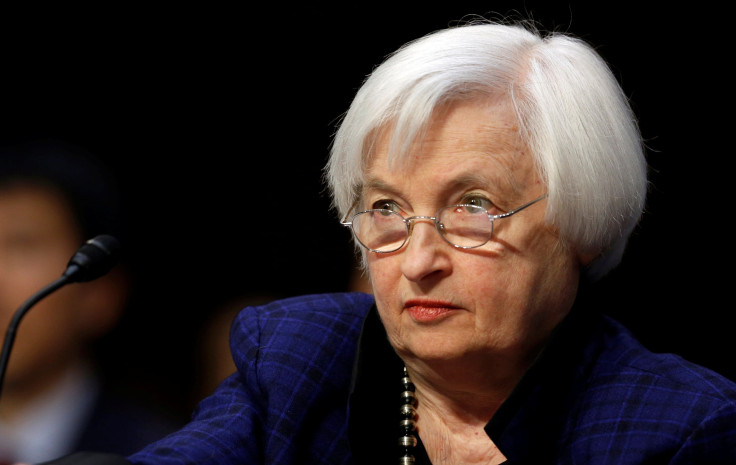How Many Times Will The Fed Raise Interest Rates Next Year? Experts Say Central Bank Could Hike Rate Up To Four Times in 2017

The Federal Reserve is almost unanimously expected to raise its target for the federal funds rate—a bank-to-bank interest rate closely followed by mortgage, bond and other interest rates—after its Wednesday meeting. But that won’t be the only rate hike in the near future.
In a report from megabank JP Morgan on economic outlook for 2017, economists predicted that interest rates would rise “at a modest pace” next year, while Goldman Sachs, in a similar report, forecasted four rate hikes in 2017. Chicago Fed President Charles Evans, normally one to err on the side of caution when it comes to policy changes, said in a speech in his home city that he projected three increases, Reuters reported.
As Steve Rick, the chief economist at insurance and financial services conglomerate CUNA Mutual Group, told IBTimes, those upcoming increases likely won’t be limited to 2017 either.
“I expect them to raise it three times in 2017, and then three more times in 2018,” said Rick, who pegs the chance of a rate increase this week at 100 percent. "It could be three times or more."
He added that Wednesday's meeting marked an early step in the process of normalizing the rate, or bringing it back up closer to pre-recession levels, after keeping it near zero to foster greater economic activity for the past seven years. By the end of 2019, he said, the rate could climb to a "neutral" level of between 2.5 and 3 percent, far above the Fed's current target range of 0.25 to 0.5 percent.
Like the economists at Goldman and JP Morgan, Rick attributed his expectations for continued rate hikes to President-elect Donald Trump’s pro-growth fiscal policy plans—namely, a boost in infrastructure and defense spending, paired with a drop in corporate and income taxes.
“When Trump comes in and says, ‘Let’s do some infrastructure spending,’ and you add in some tax cuts, that’s pretty stimulating” for the economy, Rick said.
After meetings of the central bank’s monetary policy arm on Sept. 21 and Nov. 2, Fed Chair Janet Yellen cited only moderate job growth and inflation below 2 percent, partly a result of low energy prices, as reasons to delay the rate change.
But the case for a December increase in the federal funds rate gained traction when the Bureau of Labor Statistics revealed Dec. 2 that the November unemployment rate hit a nine-year low of 4.6 percent. The BLS data release came two days after another factor helped prime the economy for higher rates: The Organization of Petroleum Exporting Countries reached an agreement on Nov. 30 to cut its supply of oil, effectively jacking up the commodity’s price from below $47 to a high of more than $55 the following week.
If Trump acts swiftly on his economic campaign proposals, which stand to ramp up job growth and inflation, the Fed will have little reason to wait.
© Copyright IBTimes 2024. All rights reserved.






















